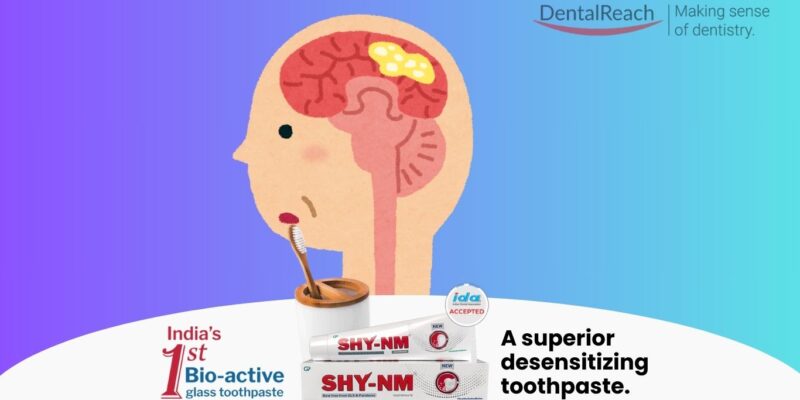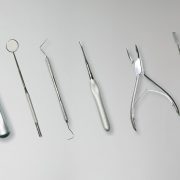Introduction
Orofacial pain – pain arising from the face, jaws, or oral cavity – represents a challenging clinical intersection between dentistry and neurology. Many patients first present to dental offices with complaints of facial pain, yet the origin may lie beyond teeth or gums. These pains range from toothaches to neuralgias and migraines, blurring the lines between dental and neurological disorders.
Dentists are often on the front line for conditions like trigeminal neuralgia or migraine-related facial pain, while neurologists bring expertise in the trigeminal nerve, cranial pathology, and pain pharmacotherapy. Recognizing the overlap, the American Dental Association formally recognized Orofacial Pain as the dental profession’s twelfth specialty in 2020, underscoring the need for specialized knowledge bridging both fields.
Clinical Interface of Dentistry and Neurology
Dentists and neurologists share a common terrain in the trigeminal nerve, which supplies sensation to the face, teeth, and jaws. Many orofacial pain conditions can present with symptoms mimicking dental pathology, yet their etiology is neurologic. Trigeminal neuralgia (TN), for example, is a severe neuropathic disorder characterized by sudden, electric shock-like pains in the face. Because TN pain often localizes to the teeth or gingiva, patients frequently consult dentists first. It is not uncommon for a TN patient to undergo dental extractions or root canals in search of relief before the true diagnosis is made. Migraines and other neurovascular headaches can similarly radiate pain to the mid-face, jaw, or even teeth. In one case, a young woman endured four root canals and a tooth extraction over eight years for what turned out to be an “atypical” migraine affecting the upper jaw. Such cases illustrate how intimately dental and neurologic diagnoses can intertwine.
As Dr. Marcela Romero-Reyes (a DDS and pain researcher) advised at a neurology conference, “
neurologists should consider dental problems (such as occlusal issues or temporomandibular disorders) and even sinus or orthodontic factors when diagnosing facial pain
.” In practice: dentists may refer patients to neurologists when a neuralgia or headache is suspected, while neurologists may consult dental colleagues for evaluation of occlusal trauma, temporomandibular joint (TMJ) disorders, or other oral health issues that could contribute to pain. Such interdisciplinary dialogue is essential in deciphering complex orofacial pain presentations.
Diagnostic Challenges in Orofacial Pain
Accurately diagnosing orofacial pain can be notoriously difficult. Symptoms in the face are often deceptively similar across different etiologies, leading to misdiagnosis and sometimes unnecessary procedures. “A misdiagnosis not only may lead to inappropriate treatment and expense, it can delay an accurate, timely diagnosis of conditions with potentially severe consequences,” warns Gary Heir, DMD, an orofacial pain expert.
- Trigeminal neuralgia is a classic example: because TN causes excruciating pain in a tooth-like distribution, studies show that a majority of patients (over 65%) initially visit a dentist, and nearly half undergo unwarranted dental treatments (extractions, root canals) before the correct diagnosis is made. In a 2020 study, Tripathi et al. reported an average of 1.6 teeth extracted per TN patient due to misdiagnosis, prompting the authors to urge better awareness among dentists and for neurologists to help “disseminate knowledge regarding proper diagnosis and treatment” of trigeminal neuralgia.
- Cluster headache, a neurovascular cephalalgia, causes searing unilateral pain often around the eye but can refer to the upper jaw and teeth. One review found that 42% of cluster headache patients had received ineffective dental treatments before the neurological cause was recognized. Conversely, temporomandibular disorders or dental infections can refer pain to the temples or ear, mimicking primary headaches.
Distinguishing between odontogenic pain (arising from teeth or gums) and neuropathic pain (arising from nerve pathology) requires careful examination and sometimes trial-and-error diagnostic injections. To improve accuracy, clinicians must maintain a broad differential diagnosis. Key historical clues can help:
- Neuralgic pain (like TN) tends to be brief, electric, and triggered by light touch or chewing.
- Neurovascular pain(migraine, cluster) is often throbbing or pressure-like and may accompany autonomic signs (tearing, nasal congestion) or headache.
- Persistent idiopathic facial pain presents as a continuous ache in the face with no clear dental or neurologic cause, often diagnosed by exclusion.
- A migraine variant dubbed “neurovascular orofacial pain” manifests primarily in mid-face or jaw regions.
Imaging is also critical: for suspected neuralgias or atypical pain, neurologists may order MRI scans to look for nerve compressions or lesions; while dentists might employ panoramic X-rays or CT to rule out occult dental pathology.
Collaborative Case Management
Effective management of orofacial pain often requires a team approach. This collaboration can occur in various ways, from informal referral networks to integrated multi-specialty clinics. This aligns with the broader trend in orofacial pain management: dentists, neurologists, pain specialists, and sometimes psychologists or ENT surgeons working in concert to address all potential aspects of a patient’s pain.
Interdisciplinary case management can take several forms:
-
- Coordinated Referrals: Dentists should promptly refer patients to a neurologist when facial pain has characteristics of neuralgia or primary headache (e.g. stabbing shock-like pain, or facial pain with migraine features), rather than pursuing repeated dental procedures. Neurologists, on their part, refer to dental specialists when pain might stem from TMJ dysfunction, dental occlusion issues, or if a comprehensive oral examination is needed. A clear referral pathway prevents patients from “doctor shopping” and expedites proper therapy.
- Multidisciplinary Clinics: Some academic centers have joint orofacial pain clinics where patients are evaluated by both dental and neurology professionals in one visit. This one-stop approach fosters real-time discussion of findings. For example, a neurologist may prescribe anticonvulsant medication for trigeminal neuralgia or a migraine prophylactic, while a dentist assesses for any concurrent dental pathology or parafunctional habits that could be contributing to pain. In complex cases, pain physicians might be involved for nerve blocks or neurosurgeons for procedures like microvascular decompression of the trigeminal nerve.
- Shared Treatment Strategies: Dentists and neurologists increasingly utilize overlapping treatments. Pharmacotherapy is a prime example – many medications used for neuropathic orofacial pain (carbamazepine, gabapentin, tricyclic antidepressants) originate from neurology practice. Conversely, some interventions developed in dentistry, like occlusal splints or Botox injections for muscle-related facial pain, have been adopted by neurologists for headache management. Regular communication ensures these treatments complement rather than contradict each other. A case in point is migraine-related facial pain: a neurologist might manage the migraine with medications, while the dentist provides a night guard if bruxism (teeth grinding) is triggering or exacerbating the pain – tackling the issue from both ends.
Crucially, mutual education is part of collaborative management. Orofacial pain has only recently gained wider recognition in training programs. Neurologists are learning more about dental terminology and pathology, while dentists receive education on neuroanatomy and pain pathways. Initiatives like the “Global Year Against Orofacial Pain” by the International Association for the Study of Pain in 2013-2014 were co-led by a dentist (Benoliel) and a neurologist, reflecting a unified effort to raise awareness. “Pain caused by nerve injury in the facial area might require treatment by a pain specialist, by a dentist trained in orofacial pain or by a neurologist trained in headache,” observes Rafael Benoliel, DDS, a leading orofacial pain academic, underscoring that complex facial pain rarely falls neatly into a single specialty. Through joint conferences, shared research (including publications in journals like Neurology and JADA), and cross-referral networks, both professions are moving toward a more integrated model of care.
Conclusion
The nexus between neurology and dentistry in managing orofacial pain is stronger than ever, driven by both clinical necessity and a growing body of interdisciplinary research. For dentists, understanding neurological contributions to facial pain – from the firing of trigeminal nerve fibers in trigeminal neuralgia to the central sensitization underlying migraines – can prevent misdiagnoses and unnecessary treatments. For neurologists, recognizing dental and musculoskeletal causes of facial pain ensures that no organic dental problem is overlooked in a patient with presumed “atypical facial pain.”
The cases of migrainous toothache, neuralgia misidentified as dental decay, or cluster headache mistaken for sinus/tooth pain all highlight a common lesson: Clinical overlaps like these demand humility and curiosity from both sides – the dentist willing to say “this pain might not be dental” and the neurologist considering “could this be a dental or TMJ issue?”
With orofacial pain now an official dental specialty and classification systems aligning with neurologic diagnoses, the framework for collaboration is firmly in place. Ultimately, the dentist’s drill and the neurologist’s prescription pad are complementary tools in alleviating orofacial pain.
References
- Bendtsen L., Zakrzewska J.M., Heinskou T., et al. Advances in diagnosis, classification, pathophysiology, and management of trigeminal neuralgia. The Lancet Neurology. 2020;19(9):784-796.
- Tripathi M., Sadashiva N., Gupta A., et al. “Please spare my teeth!” Dental procedures and trigeminal neuralgia. Surgical Neurology International. 2020;11:455.
- Karamat A., Smith J.G., Lambru G., Renton T. Changing face of orofacial pain: The diagnostic impact of working with neurology on an orofacial pain clinic. Int J Oral Maxillofac Surg. 2019;48(7):924-929.
- Bittar G., Graff-Radford S.B. A retrospective study of patients with cluster headaches (cluster headache presenting in dental practice). Oral Surg Oral Med Oral Pathol. 1992;73(5):519-525.
- May A., Benoliel R., Imamura Y., et al. Orofacial pain for clinicians: a review of constant and attack-like facial pain syndromes. Cephalalgia. 2023 Aug;43(8):1-14 (online ahead of print).
- Tolvin J. When a “Toothache” is Really a Migraine. Rutgers Today (Rutgers University News). November 20, 2013.
- Romero-Reyes M. Interview: Differentiating trigeminal neuralgia from other orofacial pain syndromes (AAN Annual Meeting 2023). VJNeurology. May 18, 2023.




















Comments